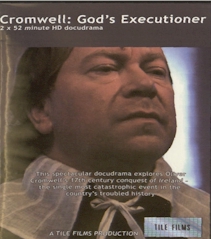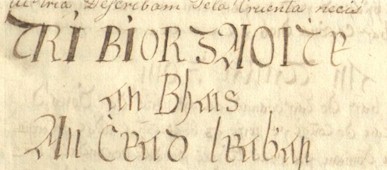The 2008 film, Cromwell in Ireland, also marketed as Cromwell: God’s Executioner, features numerous images, plates and maps from Villanova University’s Digital Library. In 2007, writers and researchers working on the script of the film were looking for archival images depicting individuals, locations, and events pertinent to the story of Cromwell’s invasion of Ireland in the 4 year period from 1649 and 1653, an event in which an estimated 500,000 people, one quarter of the population of Ireland, died from war, disease and starvation making this the greatest catastrophe ever to befall the country.

After browsing through the Joseph McGarrity Collection of the Digital Library they noted several specific images that were of interest for their educational enterprise. The writers, after contacting the Digital Library staff for permission to use these images, asked for assistance in locating other images which were proving difficult to find. An extensive search of the print Joseph McGarrity Collection and the Early European Rare Book Collection found a considerable number of rare sources with plates and maps that fit the needs of the film makers. These materials were soon digitized and added to the Digital Library for use by the international film makers and for scholars studying these tragic events.
The film produced by Irish national broadcaster RTE and the UK’s History Channel aired on Irish television in September 2008 and is scheduled to be broadcast on the UK History Channel in November of this year. The film makers hope that the series will be broadcast on a North American channel such as Smithsonian Networks or the History Channel in 2009. Directed by double IFTA Award-winning director Maurice Sweeney, the cast includes a host of international stars and features commentaries by leading historians of this period of Irish history including: Micheál Ó Siochrú, John Morrill, Professor of History at University of Cambridge, Jane Ohlmeyer, Professor of History at Trinity College, Dublin, Pádraig Lenihan, Lecturer in History at University of Limerick, Nicholas Canny, Professor of History at NUI Galway, and Ronald Hutton, Professor of History at University of Bristol.
Cromwell in Ireland is presented and largely authored by Dr. Micheál Ó Siochrú, a vibrant young Irish historian who has just published a full-length study of Cromwell’s campaign in Ireland: God’s Executioner: Oliver Cromwell and the Conquest of Ireland. Throughout the film, he and the other historians guide the viewer through the historical narrative and action, offering challenging new insights into the war and its legacy.
The historical figures that feature most prominently in the film are: Oliver Cromwell, England’s greatest general and a Puritan deeply inimical towards the Irish Catholic Church; Henry Ireton, his second-in-command and successor; Sir Charles Coote, his uncompromising lieutenant in Ulster; Owen Roe O’Neill, Gaelic Ireland’s greatest leader; his kinsman Hugh Dubh O’Neill; and the Marquis of Ormond, the ineffectual leader of the doomed Royalist coalition.
The film consists of 2 52 minute episodes, each episode including credits featuring the contributions of Villanova University’s Digital Library.

